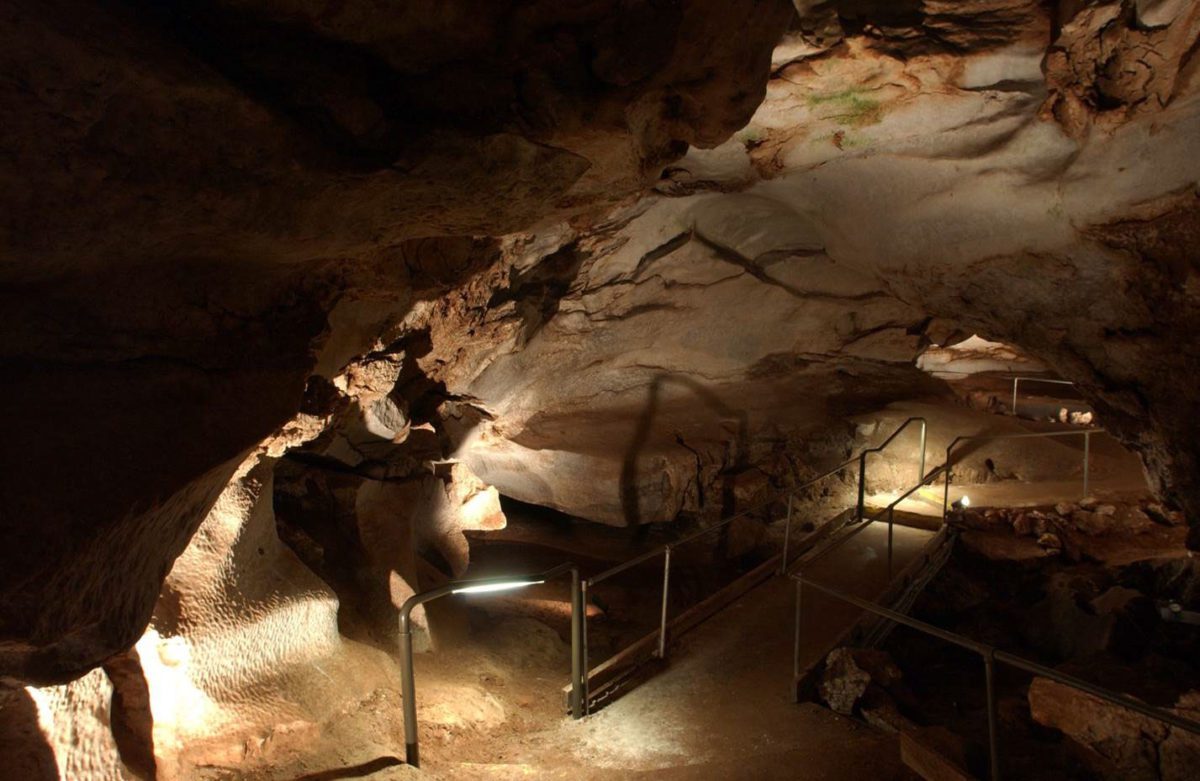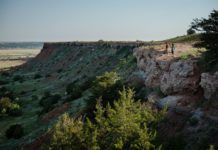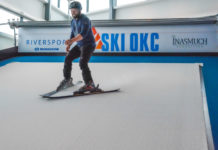If you find yourself bored with the normal routine, why not take your free time up a notch and try extreme outdoor adventures? There are numerous ways to scratch that adventure itch right here in Oklahoma.
Andy and Alyssa Beck, owners of the Oklahoma Skydiving Center in Cushing, suggest jumping out of an airplane – with the proper safety and training, of course.
“My first skydive was in 1998,” says Andy. “I realized I had found what I was meant to do. I’ve been skydiving ever since.”
Andy started out mowing grass at the drop zone, then moved up to training and certifications as his experience grew. In 2014, he and Alyssa purchased the center. Since that time, they have upgraded everything with new gear, remodeled facilities and an experienced staff.
“Six years ago, we built the first non-prototype Cessna 206 turboprop Pratt and Whitney PT-6 in the world,” says Andy. “That makes us the only dropzone in Oklahoma to have turbine aircraft – which is safer, faster and allows us to go up to 14,000 feet for all jumps, and 18,000 feet for high-altitude skydives.”
How safe is skydiving? Well, safer than you might think.
“In 2021, skydiving had 11 fatalities total worldwide out of 3.57 million skydives,” according to the United States Parachute Association, says Andy. “That’s 0.28% fatalities per 100,000. In comparison, auto accidents for the year 2020 [saw] 11.7 fatalities per 100,000 people,” according to the Insurance Institute for Highway Safety and the Highway Loss Data Institute.
After two hours of training, most people are ready for their first skydive on the same day – $220 for a 14,000 foot tandem skydive or $420 for an 18,000 foot tandem skydive that includes video and photos of the jump.
If you’re not quite ready to voluntarily jump out of a plane, there are other on-land options.
Derek Kelsey, manager of tourism and recreation for Oklahoma state parks, offers an alternative: wild caving at Alabaster Caverns. The outing is only $8 per person.
“We have four different caves on the property, which include Bear Cave, Hoe Handle Cave, Ice Stalactite Cave and Owl Cave,” says Kelsey. “These caves range from about 500 feet to 1,600 feet.”
As wild caving does involve some risks, Kelsey doesn’t recommend this sport to anyone with mobility, respiratory or heart issues. Also, if you suffer from claustrophobia, wild caving is not going to be the sport for you.
“One of the biggest risks is slipping in the cave,” says Kelsey. “Our wild caves do have some pretty rugged terrain and some tighter spots where visitors will have to crawl in order to navigate through. We require that each caver have three individual sources of light, a hard hat or bicycle helmet, long sleeves and long pants, gloves, a bottle of water and a first aid kit for the group.”
Other Adventures:
Cross Bar Ranch Off-Road Park
580-247-7244
crossbarranch.net
Beaver Dunes Park
580-625-3373
Hogan’s Off Road Park
918-520-4504
Little Sahara State Park
580-824-1471
The Ravine Outdoor Adventure Park
405-403-5407
Sail Grand Waterfront
918-257-6000
sailgrand.com
Skydive Cherokee
918-759-3483
918skydive.com
Skyway Balloons
918-850-2359






Photos courtesy Oklahoma Tourism and Recreation

























